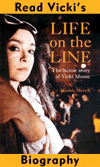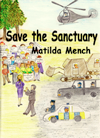A BRIEF HISTORY OF BULLFIGHTING

The Origins
Early bullfighting was carried out on horseback, to celebrate notable occasions, royal weddings, military victories and religious solemnities.
When the parliament of 815 met, bulls were killed, according to the Chronicle of Alphonso the Wise. An early instance, of which there is a documentary record, was in celebration of the coronation of Alphonso VII in 1135. The bull killing was held in Varea, Logrono, many famous knights took part. This bull spearing, almost in the form of a tourney or semi hunt, was an aristocratic diversion held infrequently and with no established norms.
Over the centuries it transferred from the jousting field to public squares. During the eighteen century, it changed form and became the enjoyment of the common people.
It is interesting to note that there are records of bull killings for entertainment in England at an equally early date.
The Change To Bullfighting On Foot
Bullfighting on foot came into popular practice in the 18th century. Bands of fighters from the lowest stratas of society killed bulls by wounding them, wherever they could, with swords, daggers, and knives.
Many of these early bullfighters were slaughtermen. The Seville slaughterhouse was the first official school of tauromachy in Spain. Jose Rodriguez (Pepete), a well-known 19th century bullfighter said that most people of his calling were slaughtermen by trade, and in a letter to a friend wrote; "What do you expect us people brought up in the slaughterhouse to be like? There's no politeness there, only 'Fling over those innards', 'Strip off that skin'. 'Cut of the head'. 'Put your feet in those puddles of blood'. We get to know the worst possible side of things".
The Andalucian riding schools encouraged and nurtured this activity for the people.

The Romero family of Ronda laid down many of the fundamentals of bullfighting, together with Joaquin Rodriguez (Costillares) and Jose Delgado (Pepe Hillo) both of Seville.
Charles IV decreed a prohibition in 1805. When the prohibition was lifted, it continued and bullfighters such as Candido and Herrera were notable.
At the return of Ferdinand Vll to the throne of Spain, the activity reached great popularity encouraged with great support from the king. In 1830 he founded the Royal School of tauromachy in Seville.
There are two styles or schools of bullfighting that of Seville and that of Ronda. That of Ronda is termed 'classical' that of Seville, classical but with a "winged baroque quality giving more scope for temperament and improvisation".
Belmonte and Manolete are credited with having established much of the style of modern bullfighting.
Bullrings
The first bullrings were wooden, easily erected and dismantled. The first one put up in Seville was quadrilateral. Another wooden structure succeeded this. In 1743 a wooden ring was erected in Madrid. The first permanent structure was built in Madrid near the Puerta de Alcala and inaugurated in 1754. The Royal Riding school in Ronda and Seville were also built. Throughout the nineteenth century many major cities and towns followed.










